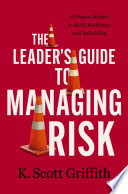

Risk management is a critical component of effective leadership. It involves identifying, assessing, and prioritizing risks followed by coordinated efforts to minimize, monitor, and control the probability or impact of unfortunate events. Leaders must understand the different types of risks—strategic, operational, financial, and compliance—and how they can affect their organizations. By cultivating a strong risk management culture, leaders can ensure that their teams are prepared to handle uncertainties, make informed decisions, and leverage opportunities that arise from risk-taking. This understanding also helps leaders communicate effectively about risks with stakeholders, fostering transparency and trust.
Continue readingImplementing a structured risk management framework is essential for organizations to systematically address risks. This framework typically includes steps such as risk identification, risk analysis, risk evaluation, risk treatment, and monitoring and review. Each step is crucial for creating a comprehensive understanding of the risks the organization faces. By following this structured approach, leaders can ensure that all potential risks are considered, and appropriate strategies are developed to mitigate them. This framework also allows organizations to adapt to changing environments and improve their resilience over time.
Continue readingA risk-aware culture is one where all employees recognize the importance of risk management and are encouraged to contribute to the process. Leaders play a pivotal role in fostering this culture by modeling risk-aware behaviors, providing training, and encouraging open communication about risks. When employees feel empowered to speak up about potential risks, organizations can identify issues early and respond proactively. This culture not only enhances risk management practices but also promotes innovation, as employees are more likely to take calculated risks when they know their organization supports them.
Continue readingStrategic risk management focuses on aligning risk management with the organization’s strategic goals. Leaders must ensure that risk management is not seen as a separate function but as an integral part of the strategic planning process. By doing so, organizations can better anticipate potential challenges and opportunities that may arise as they pursue their objectives. This alignment enables leaders to make more informed decisions and allocate resources effectively, ensuring that risks are managed in a way that supports the organization's overall vision and mission.
Continue readingEffective risk communication is vital for ensuring that all stakeholders understand the risks the organization faces and the strategies in place to manage them. Leaders must develop clear and transparent communication channels that facilitate the sharing of risk-related information. This includes not only communicating risks to internal stakeholders but also to external parties such as investors, regulators, and customers. By fostering an environment of open communication, leaders can enhance trust and collaboration, which are essential for effective risk management.
Continue readingTechnology plays a significant role in modern risk management practices. Leaders should leverage data analytics, artificial intelligence, and other technological tools to enhance their risk assessment and monitoring processes. These tools can provide valuable insights into potential risks, automate routine tasks, and improve decision-making. By embracing technology, organizations can become more agile in their risk management efforts, allowing them to respond quickly to emerging threats and capitalize on opportunities.
Continue readingRisk management is not a one-time effort but a continuous process that requires ongoing evaluation and improvement. Leaders must establish mechanisms for regularly reviewing and updating their risk management strategies to reflect changes in the internal and external environment. This includes learning from past experiences, conducting regular risk assessments, and staying informed about industry trends and best practices. By fostering a culture of continuous improvement, organizations can enhance their resilience and adaptability in the face of uncertainty.
Continue reading